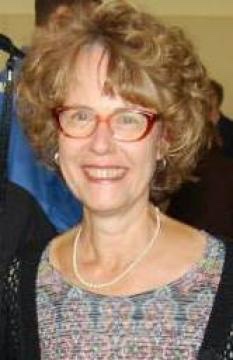
Jan Edwards
Hearing and Speech Sciences
University of Maryland
edwards@umd.edu
website

Mary Beckman
Linguistics
Ohio State
beckman.2@osu.edu
website
 |
Jan Edwards Hearing and Speech Sciences University of Maryland edwards@umd.edu website |
 |
Mary Beckman Linguistics Ohio State beckman.2@osu.edu website |
Edwards, J. & Beckman, M. E. 2008. Methodological question in studying consonant acquisition. Clinical Linguistics and Phonetics 22(12):939-958.
Edwards, J. & Beckman, M. E. 2008. Some cross-linguistic evidence for modulation of implicational universals by language-specific frequency effects in the acquisition of consonant phonemes. Language Learning and Development 4(2):122-156.
In accordance with CHILDES rules, any use of data from this corpus must be accompanied by at least one of the above references.
The name “paidologos” is a new word that we made up from Greek roots meaning “child” and “word,” in order to capture our idea of looking at children’s words in parallel across different languages. To do that, we traveled to day care centers and children’s homes in Hong Kong, eastern Japan, northern Greece, the far northeast of China, South Korea, and central Ohio to record the speech of two- to five-year-old children learning to speak either Cantonese, Japanese, Greek, Mandarin Chinese, Korean, or English. The corpora that are made available here include child and adult speech of Cantonese, Japanese, Greek, and English.
Each trial consisted of a picture and the associated sound file, which were presented simultaneously to the participant over a laptop with a 14-inch screen. The computer program included an on-screen VU meter to help the children monitor their volume and a picture of an animal (duck or frog or koala bear) walking up a ladder on the left side of the screen to provide visual feedback to the children about how close they were to completing the task. The children were instructed to repeat each word exactly as they heard it.
The first audible response to each prompt was transcribed in a Praat TextGrid. A native speaker who is also a trained phonetician listened to the response and examined the acoustic waveform for each repetition for transcription. A second native-speaking, trained phonetician blindly re-transcribed 20 percent of the data for each language.
The children's recordings took place in a quiet room at one or more preschools in each of the four countries. The adult speakers of English were recorded in a sound booth at the Ohio State University using the same protocol and equipment. The adult speakers of Japanese were recorded in a quiet room at Daito Bunka University, using the same protocol and recording equipment. The adult speakers of Greek were recorded in a quiet room at their home, or in the home of the interviewer, using the same protocol and recording equipment. The adult speakers of Cantonese were recorded in a quiet room in the Chinese University of Hong Kong using the same protocol and recording equipment.
There are two sets of files for each child, for the two lists of words that were presented for repetition. The word lists were designed to elicit the three words starting with each target consonant-vowel sequence in such a way that the different tokens that were stimuli were distributed across lists and children, so that no child was presented with all three words in the same block and each of the stimulus words for a sequence was taken from a different position in the series that the experimenter had recorded.